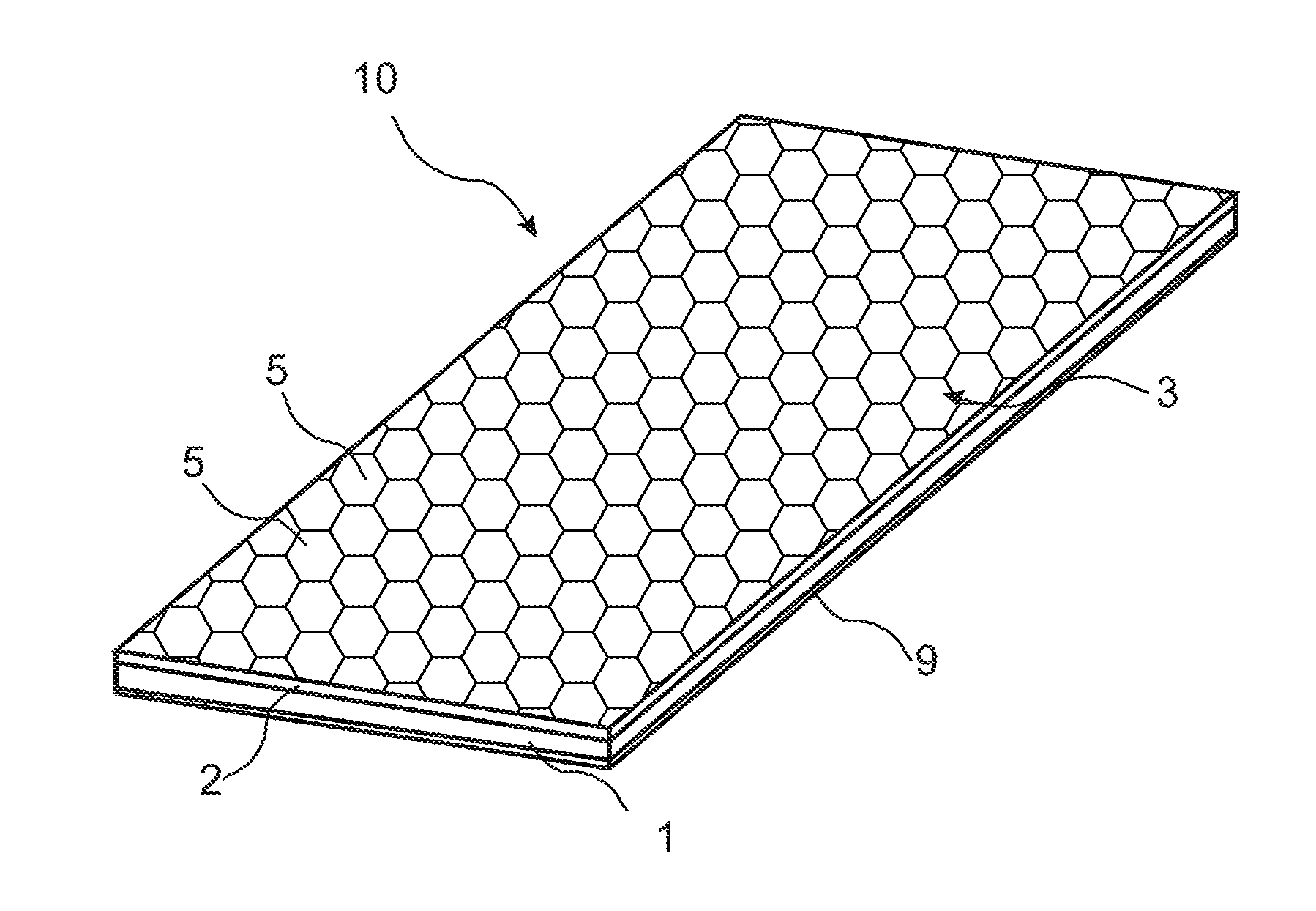Method of forming a building panel or surface element and such a building panel and surface element
- Summary
- Abstract
- Description
- Claims
- Application Information
AI Technical Summary
Benefits of technology
Problems solved by technology
Method used
Image
Examples
example 1
[0220]625 g / m2 of a powder mixture, comprising 30.41 wt % wood fibres, 8.8 wt % aluminium oxide (Alodur ZWSK 180-ST), 52.5 wt % melamine formaldehyde resin (Kauramin 773) and 8.29 wt % of pigments was scattered on a 10.0 mm HDF board for forming a sub-layer. A textile fabric was positioned on the sub-layer prior to pressing the assembly in a short cycle press for 35 seconds at 40 kg / cm2 with a press plate temperature of 140° C. During pressing, the sub-layer has permeated through the fabric. The resulting product was a building panel with a surface layer of textile being impregnated by the sub-layer during pressing.
example 2
[0221]600 g / m2 of a powder mixture, comprising 33 wt % wood fibres, 10 wt % aluminium oxide (Alodur ZWSK 180-ST), 47 wt % melamine formaldehyde resin (Kauramin 773) and 10 wt % BaSo4 (BB 30 EX) was scattered on a 10.0 mm HDF board for forming a sub-layer. A denim fabric was applied on the sub-layer. An overlay comprising a resin impregnated paper (Liquilay, AC3-N) was applied on the denim fabric. Two backing papers of 140 g / m2 each were applied to the rear side of the HDF board. The assembly was pressed in a short cycle press during 50 seconds at 40 bar with a press plate temperature of 160° C. During the pressing, the sub-layer has permeated through the fabric. The resulting product was a building panel with a surface layer of a denim fabric being impregnated by the sub-layer during pressing.
example 3
[0222]625 g / m2 of a powder mixture, comprising 30.41 wt % wood fibres, 8.8 wt % aluminium oxide (Alodur ZWSK 180-ST), 52.5 wt % melamine formaldehyde resin (Kauramin 773) and 8.29 wt % of pigments was scattered on a 10.0 mm HDF board for forming a sub-layer. An expanded metal sheet of aluminium, having an aperture dimension long way of 5.9 mm, an aperture dimension short way of 3.4 mm and a width of 0.8 mm was positioned on the sub-layer prior to pressing the assembly in a short cycle press for 35 seconds at 40 kg / cm2 with a press plate temperature of 140° C. During pressing, the sub-layer has at least partly filled the meshes of the expanded metal sheet. The resulting product was a building panel with a surface layer of expanded metal being at least partly encapsulated by the sub-layer after pressing.
PUM
| Property | Measurement | Unit |
|---|---|---|
| Temperature | aaaaa | aaaaa |
| Width | aaaaa | aaaaa |
| Pressure | aaaaa | aaaaa |
Abstract
Description
Claims
Application Information
 Login to View More
Login to View More - R&D
- Intellectual Property
- Life Sciences
- Materials
- Tech Scout
- Unparalleled Data Quality
- Higher Quality Content
- 60% Fewer Hallucinations
Browse by: Latest US Patents, China's latest patents, Technical Efficacy Thesaurus, Application Domain, Technology Topic, Popular Technical Reports.
© 2025 PatSnap. All rights reserved.Legal|Privacy policy|Modern Slavery Act Transparency Statement|Sitemap|About US| Contact US: help@patsnap.com



